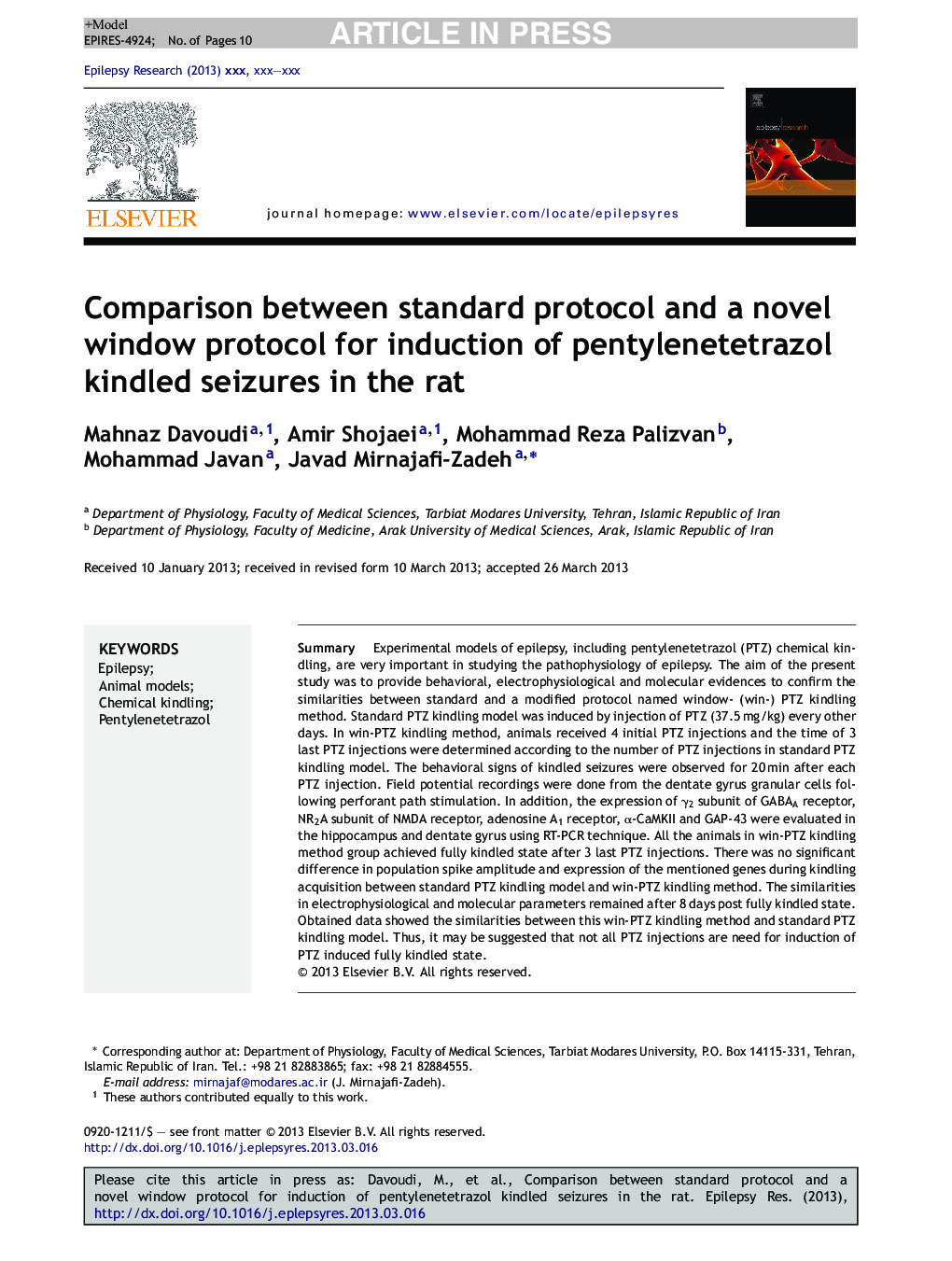| Article ID | Journal | Published Year | Pages | File Type |
|---|---|---|---|---|
| 6015729 | Epilepsy Research | 2013 | 10 Pages |
Abstract
Experimental models of epilepsy, including pentylenetetrazol (PTZ) chemical kindling, are very important in studying the pathophysiology of epilepsy. The aim of the present study was to provide behavioral, electrophysiological and molecular evidences to confirm the similarities between standard and a modified protocol named window- (win-) PTZ kindling method. Standard PTZ kindling model was induced by injection of PTZ (37.5 mg/kg) every other days. In win-PTZ kindling method, animals received 4 initial PTZ injections and the time of 3 last PTZ injections were determined according to the number of PTZ injections in standard PTZ kindling model. The behavioral signs of kindled seizures were observed for 20 min after each PTZ injection. Field potential recordings were done from the dentate gyrus granular cells following perforant path stimulation. In addition, the expression of γ2 subunit of GABAA receptor, NR2A subunit of NMDA receptor, adenosine A1 receptor, α-CaMKII and GAP-43 were evaluated in the hippocampus and dentate gyrus using RT-PCR technique. All the animals in win-PTZ kindling method group achieved fully kindled state after 3 last PTZ injections. There was no significant difference in population spike amplitude and expression of the mentioned genes during kindling acquisition between standard PTZ kindling model and win-PTZ kindling method. The similarities in electrophysiological and molecular parameters remained after 8 days post fully kindled state. Obtained data showed the similarities between this win-PTZ kindling method and standard PTZ kindling model. Thus, it may be suggested that not all PTZ injections are need for induction of PTZ induced fully kindled state.
Related Topics
Life Sciences
Neuroscience
Neurology
Authors
Mahnaz Davoudi, Amir Shojaei, Mohammad Reza Palizvan, Mohammad Javan, Javad Mirnajafi-Zadeh,
